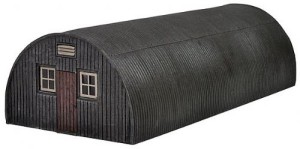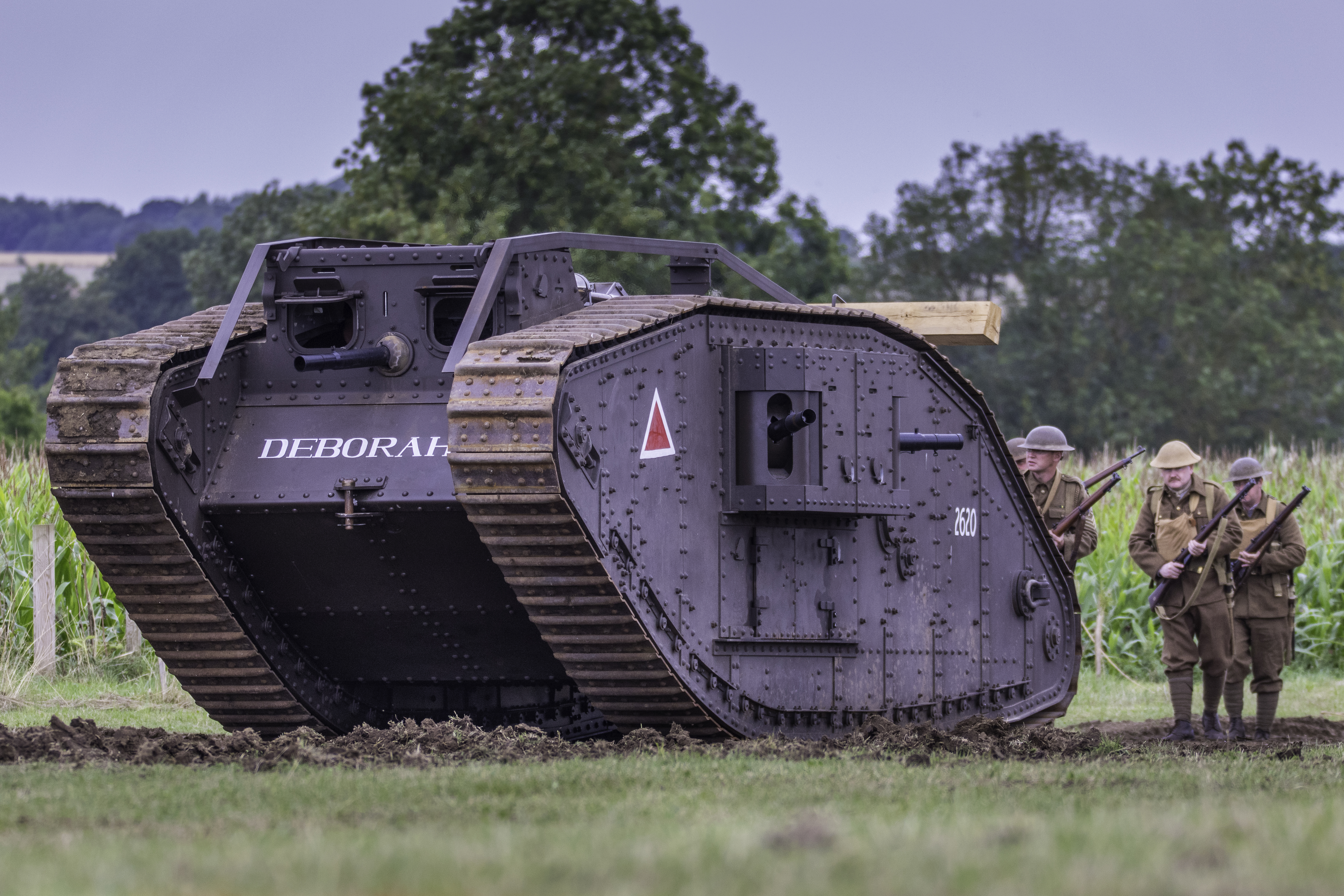Nissen Hut

Nissen-hut
Designed during WW1 by Major Peter Norman Nissen RE and put into production in August 1916. Over 100,000 were produced during the conflict and it was extensively used throughout WW1 and WW2. Nissen was awarded the DSO for his efforts.
This cheap, quickly built and multi-purpose building was made from curved sheets of corrugated steel sheet formed into (slightly more than) a half cylinder.
Each sheet is 10ft 6in x 2ft 2in (3.2 x 0.7 mtr) and are laid overlapping by 2 corrugations with a 6in (15cm) overhang at each end. 3 sheets complete the arc and 54 sheets are needed in total. These are attached to five 3 × 2 inch (7.5 x 5 cm) wooden purlins and 3 × 2 inch wooden spiking plates at the ends of the floor joists.
The purlins are attached to eight T-shaped ribs (1¾ × 1¾ × ⅛ inch; 4.5 × 4.5 × 0.5 cm) set at 6 feet 0.5 inch (1.8 m) centres. Each rib consists of three sections bolted together using splice plates, and each end is bolted to the floor at the bearers. With each rib are two tensioning wires, one on each side, and a tensioning ratchet (or in some cases a simple fencing wire strainer). The wires are tensioned during construction. These tensioning wires do not appear in the original Nissen patent.
The walls and floors rest on foundations consisting of 4 × 4 inch (10 × 10 cm) stumps with 15 × 9 inch (38 × 23 cm) sole plates. On these are 4 × 3 inch (10 × 8 cm) bearers and 4 × 2 inch (10 × 5 cm) joists at 2 feet 10 inch (86 cm) centres. The floor is made from tongue and groove floorboards or, in the case of a concrete floor the ribs are simply attached to the floor with a metal strap.
The walls at either end were made of weather boarding nailed to a wooden frame.
Nissen hut production all but ceased after the First World War but was revived in 1939 with similar hut types being developed both here and in the USA, notably the Romney hut in the UK and the Quonset hut in the US.
There was no standard configuration for the Nissen hut and many variations appeared during the war years, including being adapted into a 2 storey house, but most of the attempts to use the design in the civilian housing market ended in failure. The Nissen hut was essentially a multi-purpose building for war department use and in that role, it excelled.











